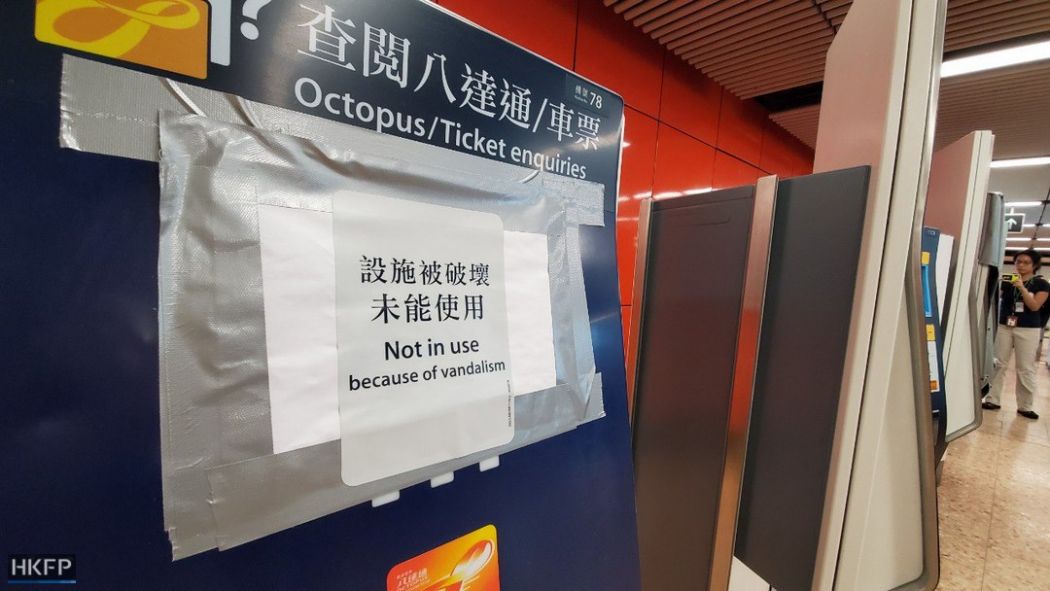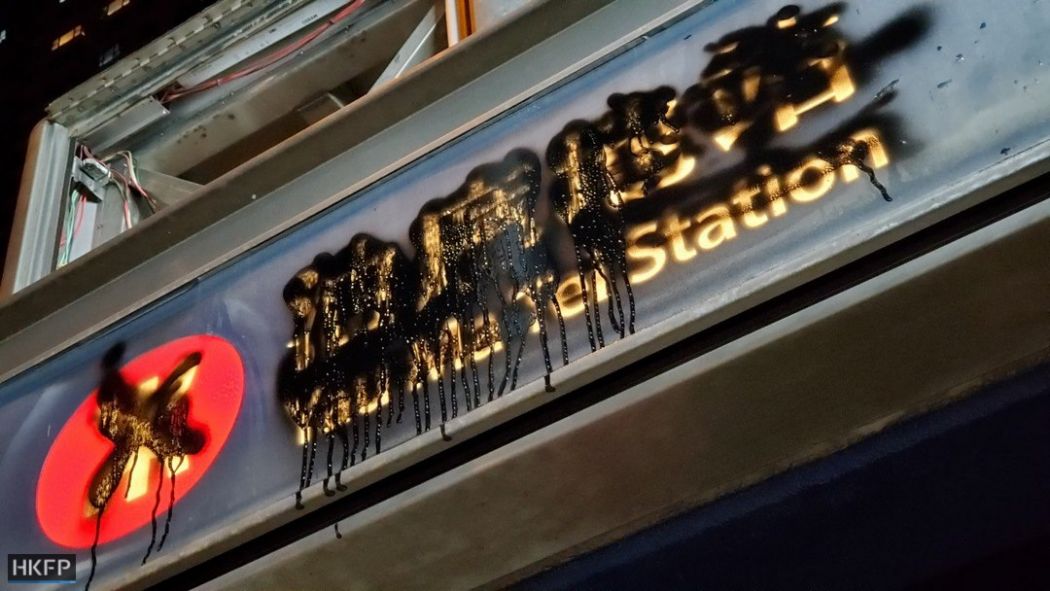Trauma creeps up on you when you are distracted. Someone bends down to pick up a piece of paper that fell on the floor of the MTR train carriage, and even if your eyes are on your phone, you catch that movement with your peripheral vision, and your heart skips a beat.
The images come back unsolicited, and play in the inscrutable theatre of one’s brain: people begging to be spared, kneeling in that same metallic, silvery doorway, crying for help and mercy. Police officers don’t care: they storm the train, they beat people they suspect of being protesters with batons and spite.

Someone is sitting dazed and bleeding in a seat that could be just the same one you are now sitting on, as you are still trying to shake yourself away from these images. It doesn’t work. At a station, someone is too close to the door, which can’t close automatically and reopens, and again you see that man, standing right there by the same door, as white-shirted thugs unleash their gangster lessons on unarmed civilians. Some beg, some are petrified. Some are bleeding and heavily bruised.
You wonder if when your stop comes you will check the air for tear gas. Instead, you see someone jump the turnstile with agility, and you think how much things have changed.
It is a morose state of affairs: just outside, by the ticket-vending machines, the authorities of the MTR have been keen to post petulant messages: “Some station facilities have been vandalised and are not available for use”. “This machines has been vandalised”.
A few turnstiles and ticket machines have been wrapped up and tied, like a failed Christo and Jeanne-Claude art installation. The show that the MTR is making of the damage it has suffered is so theatrical that some users have even discovered that certain machines, which carry the sorry sign of having been vandalised, are in fact still functioning.
The choice of word, too, is interesting: they could say “damaged” but “vandalised” evokes the hordes that sacked Imperial Rome, bringing ancient civilisation to an end. In Chinese, the sign says that the station has been 惡意破壞– destroyed with evil intentions.

It doesn’t evoke the barbarians, but it’s probably worse: the intentions behind this show that we are dealing with very, very bad people. You say pro-democracy protesters? Wrong. Intentional evil-doers!
Yet, while all this passes in front of your eyes, you are actually grateful for being able to take the train at all. The MTR has been shutting down its services at will, without any explanations – other than smoky, vague statements invoking “the situation” “incidents” “traffic”. A major display of “you-know-why” and unaccountability, something that all of Hong Kong has been forced to deal with.
Let’s not forget how we got here. Just a few weeks ago, when we were living in a different age, the MTR was providing extra trains and extended hours to accommodate those who were taking to the streets in large numbers in protest. Then, on August 23, Chinese state media decided the MTR was behaving unacceptably– by helping Hong Kong citizens to get home safely.
Ever since, the MTR has shown who is its daddy. While we are used to seeing the Mass Transit Railway Corporation as just that, railway operations are just a small portion of the whole. Unsurprisingly for number-one-free-economy-Hong Kong, the MTR is in fact both a major real estate operator, and has an extremely cozy relationship with the government, which owns 75% of it.

It is also duty-bound to please Beijing, even when this might not be in everyone’s best interest. Before the anti-Extradition Bill protests started, the MTR had been under the spotlight for an increasingly patchy reliability record. This seemed to coincide quite gloomily with a greater tendency to buy trains and other services from the mainland, even when it already knew they were faulty.
Take what happened in 2016, for example: the MTR awarded a HK$6 billion contract to CSR Qingdao Sifang to purchase new trains, in spite of the fact that Singapore had done the same thing, two years earlier, only to find out that 26 out of 35 of those trains had a tendency to crack, both in the main body of the train and in its structural component.
Undaunted, the MTR bought 93 trains from Sifang. There have been a number of reliability issues since, and confidence has indeed been affected.
Faulty trains aside, the MTR is one of the few mass-transit corporations in the world that turns a very healthy profit: but this doesn’t come from its service to citizens, but from owning malls, and being active on Hong Kong’s most profitable business, that of being a landlord.

Then, there are its overseas ventures: sure, it helps run the Melbourne Metro – but more importantly, it has an important stake in the Beijing and Hangzhou ones, which really doesn’t allow it to place its duty to its Hong Kong commuters above the wrath of the Chinese state media.
What is happening at present could best be described as a pro-government and pro-Beijing wild-cat strike, against Hong Kong citizens. While signs on their machines complain about the evil-intentioned vandals, the MTR leaves people stranded by shutting down at will, either for the day or just closing a few hours early. A collective punishment of sorts.
To see arson in stations, or demolished glass panels and destroyed ticket vending machines is not morally photogenic. And many, in Hong Kong and abroad, are looking at the destruction wondering why, of all things, the subway stations are being targeted so determinedly.
Is this vandalism, with all its dark middle-ages connotations? Or is it a feeling of betrayal, of being left at the mercy of tear gas and batons, stranded in the street, regardless of whether a demonstration is authorised or not, unable to reach one’s destination, just because the state-owned media in China decided that protecting citizens was “aiding and abetting” criminals?
The ties that bind all major Hong Kong businesses to the government, to the real estate hegemony, and to an active support for undemocratic forces have long been plain to see. Now, they have become ties that make it very hard for Hongkongers to free themselves from those memories of collective trauma that are still being left unaddressed.
Hong Kong Free Press relies on direct reader support. Help safeguard independent journalism and press freedom as we invest more in freelancers, overtime, safety gear & insurance during this summer’s protests. 10 ways to support us.

